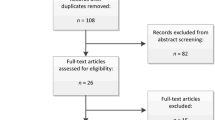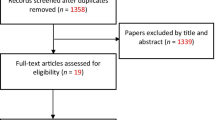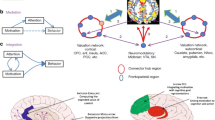Abstract
Scores on the Complex Ideational Material (CIM) were examined in reference to various performance validity tests (PVTs) in 106 adults clinically referred for neuropsychological assessment. The main diagnostic categories, reflecting a continuum between neurological and psychiatric disorders, were epilepsy, psychiatric disorders, postconcussive disorder, and psychogenic non-epileptic seizures. Cross-validation analyses suggest that in the absence of bona fide aphasia, a raw score ≤9 or T score ≤29 on the CIM is more likely to reflect non-credible presentation than impaired receptive language skills. However, these cutoffs may be associated with unacceptably high false positive rates in patients with longstanding, documented neurological deficits. Therefore, more conservative cutoffs (≤8/23) are recommended in such populations. Contrary to the widely accepted assumption that psychiatric disorders are unrelated to performance validity, results were consistent with the psychogenic interference hypothesis, suggesting that emotional distress increases the likelihood of PVT failures even in the absence of apparent external incentives to underperform on cognitive testing.
Similar content being viewed by others
References
American Psychiatric Association (2013). Diagnostic and statistical manual of mental disorders. (5th ed.). Washington, DC: Author.
Bauer, L., Yantz, C. L., Ryan, L. M., Warned, D. L., & McCaffrey, R. J. (2005). An examination of the California Verbal Learning Test II to detect incomplete effort in a traumatic brain injury sample. Applied Neuropsychology, 12(4), 202–207.
Benbadis, S. R., & Hauser, A. (2000). An estimate of the prevalence of psychogenic non-epileptic seizures. Seizure, 9(4), 280–281.
Boone, K. B. (2007). Assessment of feigned cognitive impairment. A neuropsychological perspective. New York: Guilford.
Boone, K. B. (2009). The need for continuous and comprehensive sampling of effort/response bias during neuropsychological examinations. The Clinical Neuropsychologist, 23(4), 729–741.
Boone, K. B. (2013). Clinical practice of forensic neuropsychology. New York: Guilford.
Borod, J. C., Goodglass, H., & Kaplan, E. (1980). Normative data on the Boston diagnostic aphasia examination, parietal lobe battery, and the Boston naming test. Journal of Clinical Neuropsychology, 2, 209–215.
Bortnik, K. E., Boone, K. B., Marion, S. D., Amano, S., Ziegler, E., Victor, T. L., & Zeller, M. A. (2010). Examination of various WMS-III logical memory scores in the assessment of response bias. The Clinical Neuropsychologist, 24(2), 344–357.
Christensen, H., Griffiths, K., MacKinnon, A., & Jacomb, P. (1997). A quantitative review of cognitive deficits in depression and Alzheimer-type dementia. Journal of the International Neuropsychological Society, 3, 631–651.
Considine, C., Weisenbach, S. L., Walker, S. J., McFadden, E. M., Franti, L. M., Bieliauskas, L. A., … Langenecker, S. A. (2011). Auditory memory decrements, without dissimulation, among patients with major depressive disorder. Archives of Clinical Neuropsychology, 26, 445–453.
Cragar, D. E., Berry, D. T., Fakhoury, T. A., Cibula, J. E., & Schmitt, F. A. (2006). Performance of patients with epilepsy or psychogenic non-epileptic seizures on four measures of effort. The Clinical Neuropsychologist, 20(3), 552–566.
Dodrill, C. B. (2008). Do patients with psychogenic nonepileptic seizures produce trustworthy findings on neuropsychological tests? Epilepsia, 49(4), 691–695.
Egeland, J., Lund, A., Landro N. I., Rund, B. R., Sudet, K., Asbjornsen, A., … Stordal, K. I. (2005). Cortisol level predicts executive and memory function in depression, symptom level predicts psychomotor speed. Acta Psychiatr Scand, 112, 434–441.
Erdodi, L. A., Abeare, C. A., Lichtenstein, J. D., Tyson, B., T., Kucharski, B., Zuccato, B. G., & Roth, R. M. (2016). WAIS-IV processing speed scores as measures of non-credible responding – The third generation of embedded performance validity indicators. Psychological Assessment.
Erdodi, L. A., & Roth, R. M. (2016). Low scores on BDAE Complex Ideational Material are associated with invalid performance in adults without aphasia. Applied Neuropsychology: Adult.
Erdodi, L. A., Roth, R. M., Kirsch, N. L., Lajiness-O’Neill, R., & Medoff, B. (2014). Aggregating validity indicators embedded in Conners’ CPT-II outperforms individual cutoffs at separating valid from invalid performance in adults with traumatic brain injury. Archives of Clinical Neuropsychology, 29(5), 456–466.
Greiffenstein, M. F., Baker, W. J., & Gola, T. (1994). Validation of malingered amnesia measures with a large clinical sample. Psychological Assessment, 6, 218–224.
Greve, K. W., & Bianchini, K. J. (2004). Setting empirical cut-offs on psychometric indicators of negative response bias: a methodological commentary with recommendations. Archives of Clinical Neuropsychology, 19, 533–541.
Greve, K. W., Bianchini, K. J., & Doane, B. M. (2006). Classification accuracy of the test of memory malingering in traumatic brain injury: results of a known-group analysis. Journal of Clinical and Experimental Neuropsychology, 28(7), 1176–1190.
Heaton, R. K., Miller, S. W., Taylor, M. J., & Grant, L. (2004). Revised comprehensive norms for an expanded Halstead-Reitan battery: demographically adjusted neuropsychological norms for African American and Caucasian adults. Lutz: PAR.
Heinly, M. T., Greve, K. W., Bianchini, K., Love, J. M., & Brennan, A. (2005). WAIS digit-span-based indicators of malingered neurocognitive dysfunction: classification accuracy in traumatic brain injury. Assessment, 12(4), 429–444.
Jones, A. (2013). Test of memory malingering: cutoff scores for psychometrically defined malingering groups in a military sample. The Clinical Neuropsychologist, 27(6), 1043–1059.
King, J. H., Sweet, J. J., Sherer, M., Curtiss, G., & Vanderploeg, R. D. (2002). Validity indicators within the Wisconsin card sorting test: application of new and previously researched multivariate procedures in multiple traumatic brain injury samples. The Clinical Neuropsychologist, 16(4), 506–523.
Langenecker, S. A., Bieliauskas, L. A., Rapport, L. J., Zubieta, J. K., Wilde, E. A., & Berent, S. (2005). Face emotion perception and executive functioning deficits in depression. Journal of Clinical and Experimental Psychology, 27, 320–333.
Larrabbee, G. J. (2003). Detecting of malingering using atypical performance patterns on standard neuropsychological tests. The Clinical Neuropsychologist, 17(3), 410–425.
Martin, P. K., Schroeder, R. W., & Odland, A. P. (2015). Neuropsychologists’ validity testing beliefs and practices: a survey of North American professionals. The Clinical Neuropsychologist, 29(6), 741–746.
Moore, B. A., & Donders, J. (2004). Predictors of invalid neuropsychological performance after traumatic brain injury. Brain Injury, 18(10), 975–984.
Myers, L. (2014). Psychogenic non-epileptic seizures: a guide. North Charleston: CreateSpace.
Pearson (2009). Advanced Clinical Solutions for the WAIS-IV and WMS-IV – Technical Manual. San Antonio, TX: Author.
Rees, L. M., Tombaugh, T. N., & Boulay, L. (2001). Depression and the test of memory malingering. Archives of Clinical Neuropsychology, 16, 501–506.
Rohling, M. L., Green, P., Allen, L. M., & Iverson, G. L. (2002). Depressive symptoms and neurocognitive test scores in patients passing symptom validity tests. Archives of Clinical Neuropsychology, 17, 205–222.
Spencer, R. J., Axelrod, B. N., Drag, L. L., Waldron-Perrine, B., Pangilinan, P. H., & Bieliauskas, L. A. (2013). WAIS-IV reliable digit span is no more accurate than age corrected scaled score as an indicator of invalid performance in a veteran sample undergoing evaluation for mild TBI. The Clinical Neuropsychologist, 27(8), 1362–1372.
Stenclik, J. H., Miele, A. S., Silk-Eglit, G., Lynch, J. K., & McCaffrey, R. J. (2013). Can the sensitivity and specificity of the TOMM be increased with different cut-off scores? Applied Neuropsychology: Adult, 20(4), 243–248.
Suhr, J. A., & Boyer, D. (1999). Use of the Wisconsin card sorting test in the detection of malingering in student simulator and patient samples. Journal of Clinical and Experimental Psychology, 21(5), 701–708.
Suhr, J., Tranel, D., Wefel, J., & Barrash, J. (1997). Memory performance after head injury: contributions of malingering, litigation status, psychological factors, and medication use. Journal of Clinical and Experimental Psychology, 19(4), 500–514.
Wolfe, P. L., Millis, S. R., Hanks, R., Fichtenberg, N., Larrabee, G. J., & Sweet, J. J. (2010). Effort indicators within the California Verbal Learning Test-II (CVLT-II). The Clinical Neuropsychologist, 24(1), 153–168.
World Health Organization (2014). ICD-10: International statistical classification of disease and related health problems: 10th revision (2nd ed.). Geneva, Switzerland: Author.
Author information
Authors and Affiliations
Corresponding author
Ethics declarations
Conflict of Interest
None.
Ethical Approval
All procedures performed in studies involving human participants were in accordance with the ethical standards of the institutional and/or national research committee and with the 1964 Helsinki Declaration and its later amendments or comparable ethical standards.
Informed Consent
Given that the data were collected as part of a retrospective archival study, the requirement for informed consent was waived by the Committee for the Protection of Human Subjects at the institution where the data were collected. The project was also approved by the Research Ethics Board of the institution where the study was completed.
Rights and permissions
About this article
Cite this article
Erdodi, L.A., Tyson, B.T., Abeare, C.A. et al. The BDAE Complex Ideational Material—a Measure of Receptive Language or Performance Validity?. Psychol. Inj. and Law 9, 112–120 (2016). https://doi.org/10.1007/s12207-016-9254-6
Received:
Accepted:
Published:
Issue Date:
DOI: https://doi.org/10.1007/s12207-016-9254-6




